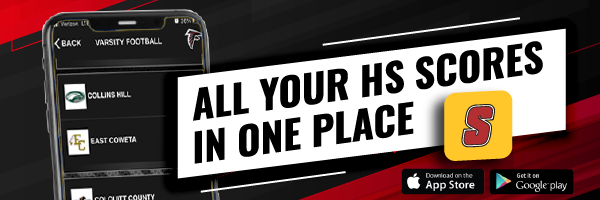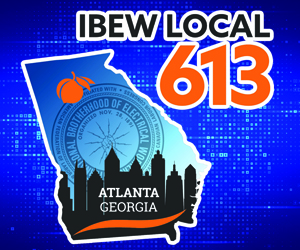The following is an excerpt from the Georgia High School Football Daily, an e-mail newsletter compiled by longtime Atlanta high school football writers Todd Holcomb and Chip Saye:
Lassiter hadn’t won a state playoff game in its history when coach Chip Lindsey arrived at the East Cobb school last spring from Hoover High in Alabama, where he had been offensive coordinator for one season under Rush Propst.
Lindsey (right, photo by Ed Turlington/et images) converted Lassiter from an option, running team to a spread, throwing team and went 9-3. Quarterback Hutson Mason, a junior and first-year starter, threw for 3,705 yards, five short of the state record.
One of the Lindsey’s best achievements was recruiting – within his own school. Three starters on the 2008 team that upset Region 5-AAAAA champion Etowah in the first round were not playing football when Lindsey arrived. Lassiter had 67 players when he came. Now, he has 128.
Lindsey spoke with GHSF Daily on Wednesday about the spread offense, turning around a program and the differences between football in Georgia and Alabama.
Key to success: “The best thing we did was hire a staff that all believed in the same things. We recruited the school and talked football and got everybody out that needed to be playing. Some had never played. Some had played and quit. Then, we brought an exciting brand of football that kids enjoy. There are so many other things they can do that you have to make it fun and exciting. We really concentrated on making relationships with players. They’ve all got our cell phones. They can contact us at any time. We want to be mentors for them.”
Converting to the spread: “We just felt like at a school the size of ours, we can always find one guy that can throw it around a little bit. I was at a little AAA school in Alabama, Colbert Heights, and they had been a wishbone. We found a kid they had at tight end who could throw it. There’s a misconception in our offense. We can adapt it to our personnel. If we’ve got a more athletic quarterback, we can cater to him. If we’ve got a drop-back quarterback, we can cater to him.”
East Cobb: “A key to being successful at East Cobb or schools where there’s affluence is to embrace those other sports. We’ve got 12 players who play lacrosse, a handful who play on the soccer team who are good high school football players. At Hoover, the last four quarterbacks were big-time baseball players, so they were doing other things in the summer, but they made it work.” [GHSF Daily note: Mason and Philip Lutzenkirchen, the tight end who signed with Auburn, were starters on the basketball team. About 10-15 football players came from the baseball program, which is a state power.]
First impressions of Mason: “I met him Feb. 1, 2008, my first day on the job. A couple of weeks later, I watched some old JV games they had in the field house. You could see he could throw it, but the offense hid his talents. Once I met him and saw how excited he was to be throwing in our offense, he took to it like a duck to water.”
When he knew he had something with Mason: “He’s worked extremely hard to get where he’s at. He was not very polished when we got there. When we opened up last year, the first game he was 32-of-42. You realized then he was very accurate and a student of the game, but that’s really the first time I saw his competitiveness come out. After that, we were thinking this guy can be pretty good.”
Mason on the next level: “He can fit in any type of pro-style or spread offense. His strengths are accuracy and understanding the game. His weaknesses, he doesn’t have a lot except he wants to get physically stronger. He’s got a high ceiling at the next level.”
The 2009 season: “We did lose Lutzenkirchen. We lost a lot of seniors, but we also played two deep at each position and rotated them. Some of them are good, but you’ve not heard about them. A question mark is the offensive and defensive lines. They’re young. Hopefully they’ll surprise people. We lost 26 seniors, but when you have 100, you’re always going to lose 25.”
Alabama vs. Georgia: “There are more athletes in Georgia because of the sheer population. More teams in Alabama are spreading out and throwing. In Georgia, they run more. Even though there’s more shotgun, they run out of it. In Georgia, there’s more things to do. There are no pro sports in Alabama. On Friday nights, football is the biggest thing going in Alabama.”
Coaching influences: “My dad was a high school coach in the 1970s at Colbert Heights. I grew up around that. From my dad, I learned to treat people fairly and make things fun for players. My high school coach was a guy named Ricky Sizemore. I still talk to him today. He handled people well. He was a people person. Then John Mothershed. He won three state championships at Deshler, Ala. He was about discipline and being hard-nosed and tougher than everybody. Then obviously working at Hoover with Rush, I learned a lot about organizing a program and creating a buzz. Kids wanted to come out and play football at Hoover.”
Coming Friday: An interview with Tucker coach Franklin Stephens
Subscribe to the Georgia High School Football Daily by sending an email to ghsfdaily@bellsouth.net.







































